Australian Tropical Rainforest Plants - Online edition
Linospadix microcaryus (Domin) Burret
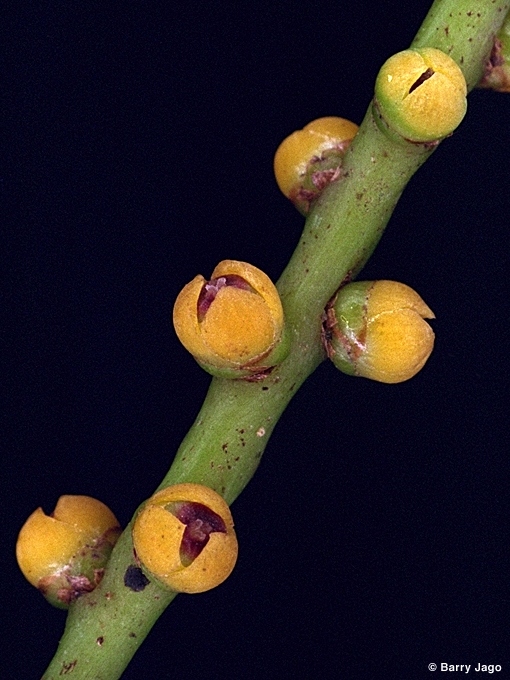

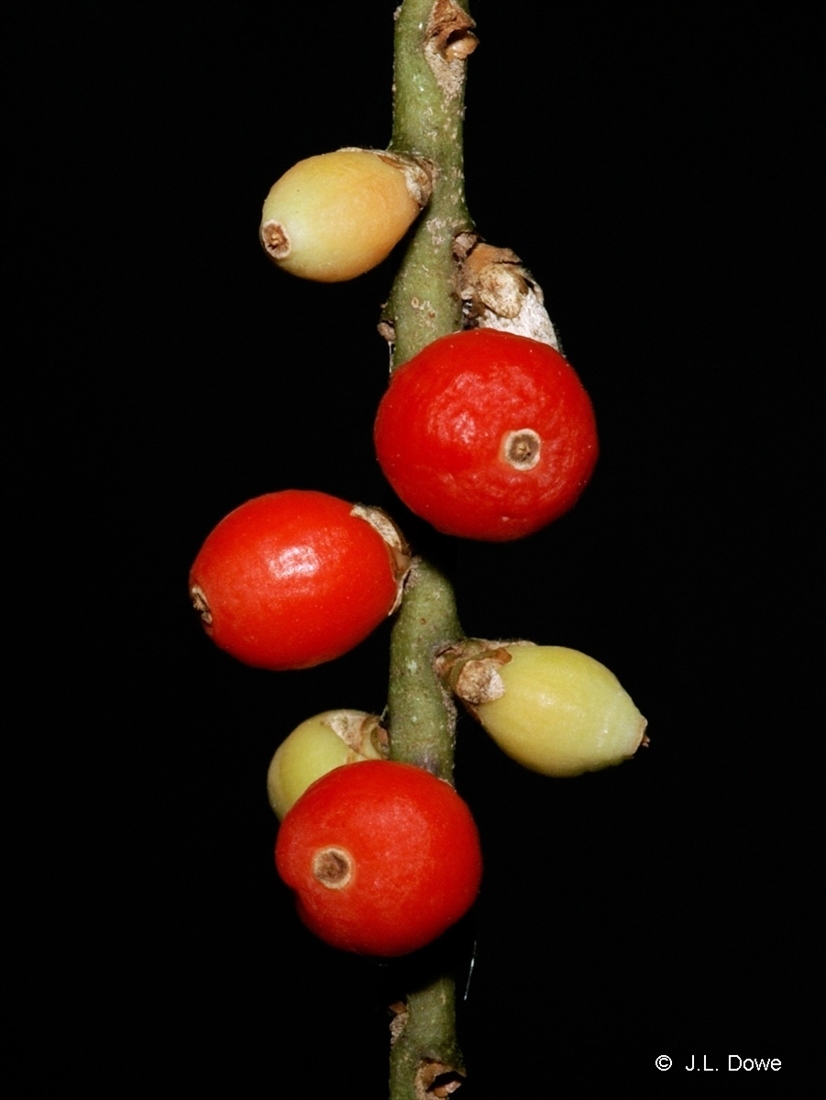

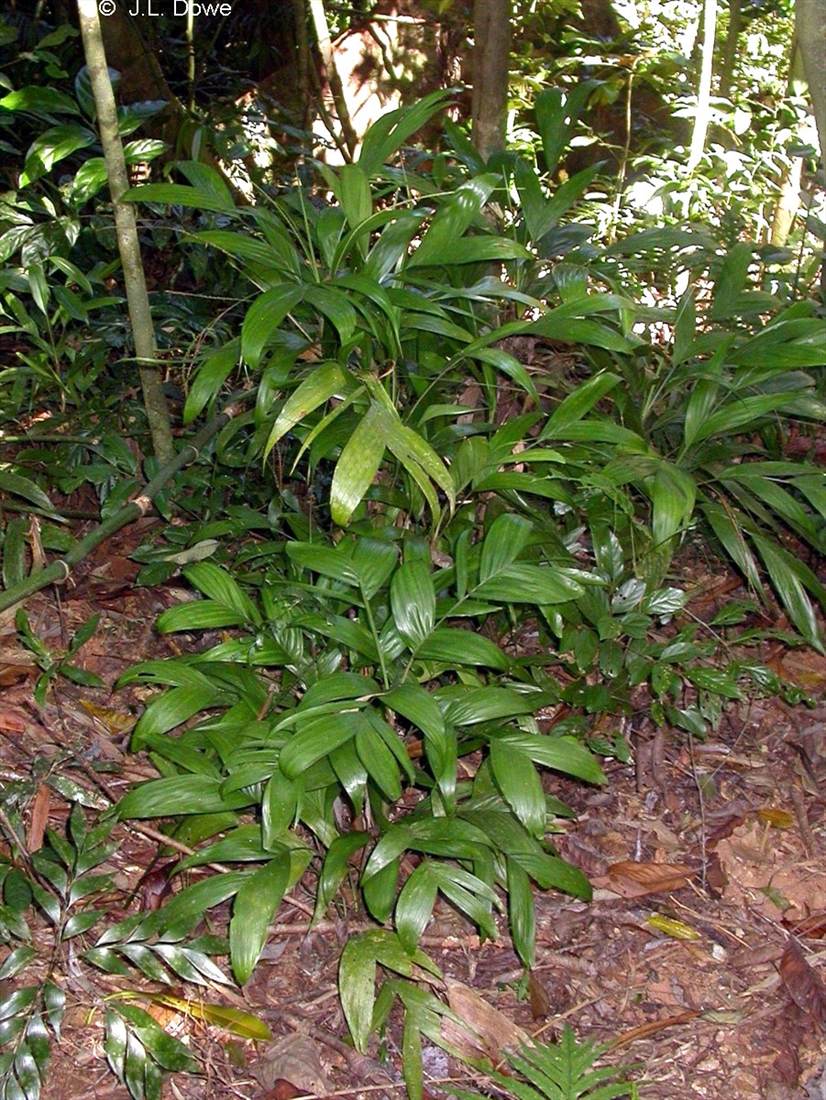

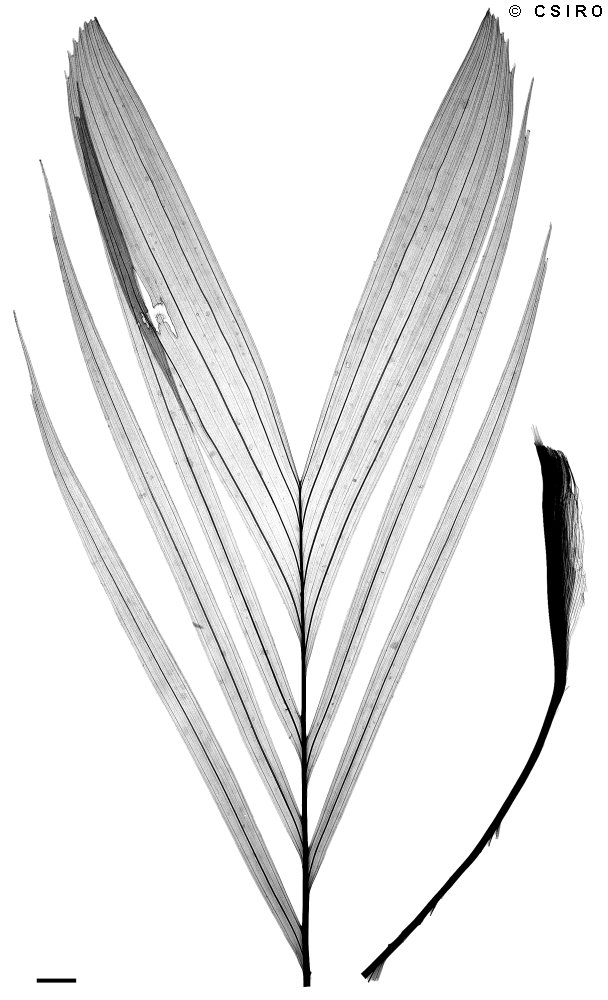
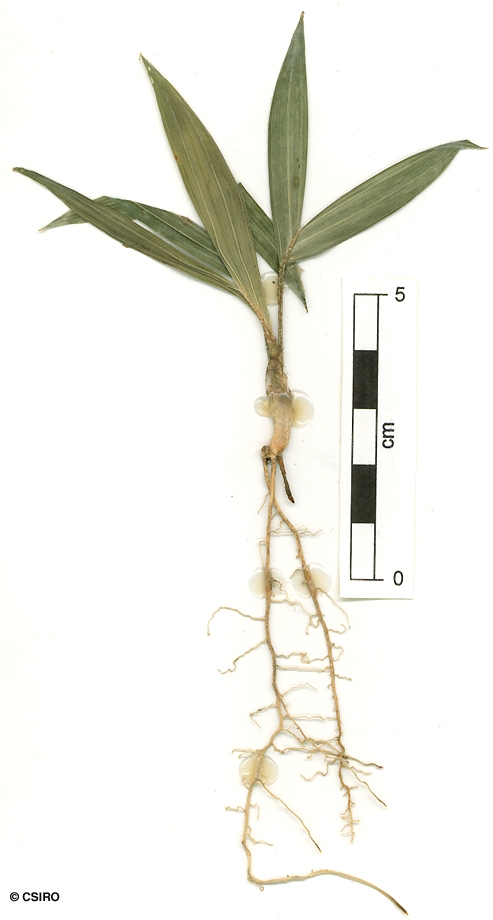
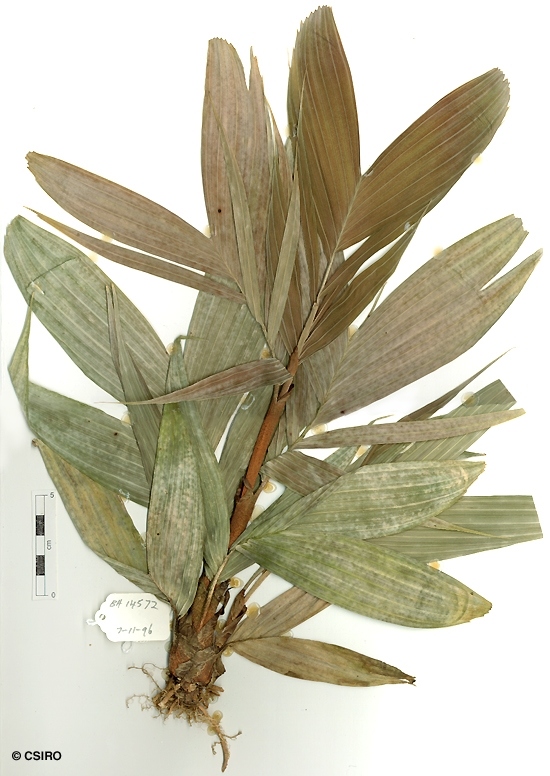
Burret, (M.)K.E. (1934) Notizblatt des Botanischen Gartens und Museums zu Berlin-Dahlem 12 : 331.
Palm, Walking Stick; Walking Stick Palm
Clustering small palm, 1-3 m tall. Usually flowers and fruits as a shrub 1-3 m tall but occasionally grows to 4 m.
Petiole and rhachis (at least towards the base) scurfy or densely clothed in prostrate hairs. Lateral leaflets about 15-20 cm long. Terminal leaflets or segments wider at the base than any of the lateral leaflets. Leaflets discrete. Elongated clear 'cells' visible with a lens in the leaf blade. Cells run +/- parallel with the midrib and veins, 3-23 per leaf. Leaflet apex usually praemorse, at least the broader apical ones. Compound leaf petiole more than half the length of the leaflet producing section of the rhachis.
Inflorescence contains both male and female flowers, spikes about 30-80 cm long, peduncles about 40 cm long, male flowers opening and falling before the female flowers in the same cluster reach maturity. Anthers about 8-12 per flower. One ovule per ovary.
Seed germination time 105 to 196 days. First leaf compound with two leaflets or deeply lobed, Y or V-shaped, each lobe with a midrib and 1 or 2 other major veins plus a number of minor longitudinal veins. At the tenth leaf stage: leaf compound with two or three broad-based, sessile or up to 8 or 9 longitudinally veined leaflets. Leaflets usually notched at the apex. Compound leaf base sheathing the stem and densely clothed in crisped hairs.
Endemic to NEQ. Found in the Mt Spurgeon and Mt Lewis areas and southwards to Innisfail. Altitudinal range from near sea level to 1600 m. Grows as an understory plant in a variety of well developed types of rain forest.





